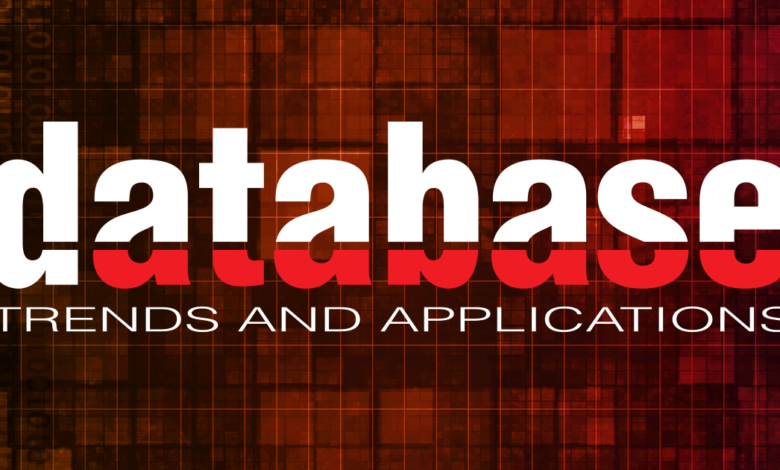IT Experts Offer Cloud Predictions for 2024

Investment in the cloud shows no signs of stopping despite the recent uptick in organizations rushing to adopt AI and other rising solutions. According to Gartner, business needs and emerging technologies including GenAI will drive cloud model innovation. Here, tech leaders share their predictions for cloud in 2024:
Cloud and OS agnostic high availability becomes an expected requirement for most applications: IT teams will look for application HA solutions that are consistent across operating systems and cloud reducing complexity and improving cost-efficiency. As the need for HA rises, companies running applications in both on-prem and cloud environments as well as those running applications in both Windows and Linux environments will look to streamline their application environments with HA solutions that deliver a consistent user interface across all of their environments and also for matching cloud and OS technical support and services from the HA vendor. –Cassius Rhue, vice president, customer experience, SIOS Technology
Hybrid and Multi-cloud Acceleration: In 2024, the adoption of hybrid and multi-cloud strategies is expected to accelerate, both for strategic and tactical reasons. From a strategic standpoint, organizations will aim to avoid vendor lock-in and will want to retain sensitive data on-premises while still utilizing the scalable resources offered by cloud services. Tactically, due to the continued scarcity of GPUs, companies will seek to access GPUs or specific resources and services that are unique to certain cloud providers. A seamless combination of cross-region and cross-cloud services will become essential, enabling businesses to enhance performance, flexibility, and efficiency without compromising data sovereignty. –Haoyuan Li, founder and CEO, Alluxio
Hybrid multi-cloud architecture will be the new “data center”: Multi-cloud adoption has accelerated in the past few years. In early 2023, a survey suggested that 98% of companies on the public cloud already have plans to switch to a multi-cloud infrastructure. At the same time, organizations have also been increasingly relying on hybrid cloud architecture for flexibility and cost-saving purposes in the hybrid work era. In the coming year, we will see an influx of companies opting for hybrid and multi-cloud strategies. The difference with the previous years is evident, as they will aim to seamlessly combine these two approaches. Companies will be enjoying the best of both worlds: the flexibility and scalability of multi-cloud architecture coupled with sovereignty and control over their data and applications offered by the hybrid cloud—in-country, across regions, or around the world. –Amitabh Sinha, Workspot CEO and Citrix veteran
All aboard the cloud train? Maybe not…: As large enterprises revisit their cloud strategy decisions, look for a shift to more self-managed, self-hosted architectures, with the resulting need for more traditional security models and approaches which have been largely supplanted by the mad dash to the cloud. CIOs and CISOs will likely find themselves asking their technology partners to support increasingly hybrid models or entire on-prem architectures that may require a top-down rethink of their risk, compliance, and security strategies, as well as realignment of investment priorities. –Igor Volovich, vice president of compliance strategy at Qmulos
AppSec and CloudSec teams convergence: In 2024, the fusion of company AppSec and CloudSec teams will become more prevalent—we’ve already seen this movement begin within our customer base. The consensus driving this trend is that working separately within these silos is not efficient and that the combined team unit can create a unified and complete security strategy for both applications and cloud environments. –Shahar Man, co-founder and CEO of Backslash Security
Recognizing cloud as an operational model: In 2024, we will see a significant shift in the perception of cloud computing. Gone are the days when all public cloud is good; we will now be looking at cloud as an ecosystem. Cloud will no longer be a fixed location–either on-prem or in the cloud–it’s an operating model that offers cloud principles like agility, self-service, cost-effectiveness, and scalability. This transformation from a location to an operational framework is becoming increasingly clear as more cloud providers begin to leverage solutions that bridge the gap between on-prem and cloud deployments. –Monica Kumar, chief marketing officer at Hitachi Vantara
Bring Your Own Cloud (BYOC) will emerge as a SaaS strategy for large enterprises: Over the next year, we will see increased adoption of Bring Your Own Cloud (BYOC) as large enterprises seek a more cost-effective and flexible approach. BYOC centers on a cloud application’s control and data planes. SaaS vendors handle the control plane, which includes user management, configurations, and policies, while the data plane, where the work execution occurs, can be hosted by the enterprise itself. Large enterprises will ask for BYOC from their SaaS vendors to optimize spend, reduce the back-and-forth of data transfer, and have greater control over their cloud environments to address data sovereignty concerns. Many SaaS vendors may need help to provide BYOC, opening up opportunities for specialized vendors to solve this complex problem. –Chad Tindel, field CTO and VP of worldwide solution architecture, ngrok
2024: the Rise of the Data Cloud to Advance AI and Analytics: While data clouds are not new, I believe there will be a continued emergence and a clear distinction made between data clouds and compute clouds in 2024. With compute clouds like AWS or Azure, we have had to assemble and stitch together all the components needed to work with AI. So, with data clouds, like Snowflake or Microsoft Fabric, users have it all pre-packaged together in a single platform, making it much easier to run analytics on data needed to build AI systems. The rise of the data clouds will offer a better starting point for data analytics and Artificial Intelligence (AI) and Machine Learning (ML).—Molham Aref, founder and CEO of RelationalAI
Cloud infrastructure plus cost benefits will persuade previous holdouts on cloud migration: In 2024, organizations that haven’t yet migrated workloads to the cloud out of fear or budget consciousness will do it from an infrastructure-first approach – not a SaaS-based one. The path of least resistance (and most ROI) for budget conscious, risk-averse organizations who have been procrastinating on cloud migration will be choosing an IaaS service that helps them reduce infrastructure and maintenance costs. Not every cloud solution can be solved by a SaaS model – and even the early adopters will recalibrate their cloud strategies to ensure their approach is helping them meet their specific needs around streamlining infrastructure (IaaS), optimizing application development (PaaS) or accessing ready-made software (SaaS). As more organizations question and refit their cloud data management strategies, IaaS will probably provide them with the most bang for their buck in 2024. –Heath Thompson, president and GM, Quest Software
Private cloud renaissance: The availability of cloud-native infrastructure will lead to a resurgence of private cloud adoption. Cloud Centers of Excellence (CCoEs) will, for the first time, be able to both compare and apply uniform policies between both public and private clouds. Open standards like FOCUS, the FinOps cost, and usage specification will help facilitate this shift. –Andrew Moloney, chief strategy Officer at SoftIron
Movement to multi-cloud intensifies: Regulatory pressures and the recognition of cloud concentration risk mean more business-critical applications will need to be truly multi-cloud, able to operate across—and failover between—multiple clouds. –Phillip Merrick, co-founder and CEO of pgEdge
DevOps will adopt cloud-based code signing: With more cloud migrations and the continued growth of containerized applications, machine identities will keep growing exponentially. This growth in machine identities will initiate a pivot in how organizations approach securing complex hybrid multi-cloud infrastructures. Identities will form the new perimeter as organizations adopt identity first security approaches and zero trust strategies that require visibility, control, and management of trusted identities. –Murali Palanisamy, chief solutions officer, AppViewX
AI and machine learning will go full cloud-native: CPU-based Kubernetes clusters will be extended for containerized services and models to run on GPU-based clusters. Principles of cloud engineering and architecture will be transferred to the GPU world so that developers who are already using Kubernetes and container registries for app development on CPUs will be empowered to shift their development efforts to GPUs. –Kevin Cochrane, CMO of Vultr



